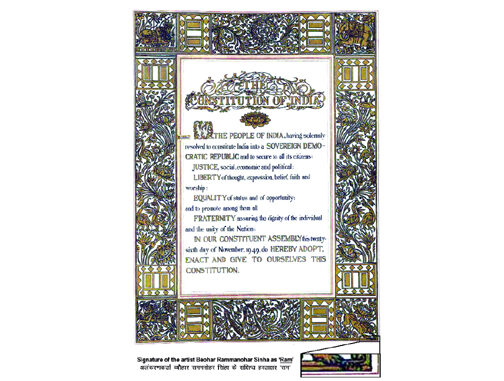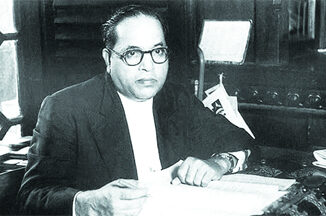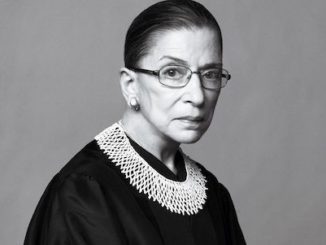
The Constitution of India is the supreme law of the land, serving as the framework for governance and the legal foundation of the world’s largest democracy. Enacted on January 26, 1950, it establishes the principles, structures, and powers of the government and delineates the fundamental rights and duties of its citizens. This article provides an in-depth exploration of the Constitution-its origins, structure, features, and significance.
Historical Context and Drafting
The journey of the Indian Constitution began with the demand for self-rule during the Indian independence movement. The idea of a constituent assembly was first proposed in 1934 by M.N. Roy, and the process gained momentum after the 1940 August Offer and the Cripps Mission in 1942. Post-independence, the Constituent Assembly was formed in December 1946 to draft a constitution.
Dr. B.R. Ambedkar, often referred to as the “Architect of the Indian Constitution,” chaired the Drafting Committee. The assembly included prominent leaders like Jawaharlal Nehru, Sardar Vallabhbhai Patel, Maulana Abul Kalam Azad, and Rajendra Prasad. After almost three years of debates and deliberations, the Constitution was adopted on November 26, 1949, and came into effect on January 26, 1950.
On the 14 August 1947 meeting of the Assembly, a proposal for forming various committees was presented. Such committees included a Committee on Fundamental Rights, the Union Powers Committee and Union Constitution Committee. On 29 August 1947, the Drafting Committee was appointed, with Dr B. R. Ambedkar as the Chairman along with six other members assisted by a constitutional advisor. These members were Pandit Govind Ballabh Pant, Kanaiyalal Maneklal Munshi (K M Munshi, Ex- Home Minister, Bombay), Alladi Krishnaswamy Iyer (Ex- Advocate General, Madras State), N Gopalaswami Ayengar (Ex-Prime Minister, J&K and later member of Nehru Cabinet), B L Mitter (Ex-Advocate General, India), Md. Saadullah (Ex- Chief Minister of Assam, Muslim League member) and D P Khaitan (Scion of Khaitan Business family and a renowned lawyer). The constitutional advisor was Sir Benegal Narsing Rau (who became First Indian Judge in International Court of Justice, 1950-54). Later B L Mitter resigned and was replaced by Madhav Rao (Legal Advisor of Maharaja of Vadodara). On D P Khaitan’s death, T T Krishnamachari was included in the drafting committee. A draft Constitution was prepared by the committee and submitted to the Assembly on 4 November 1947, which was debated and over 2000 amendments were moved over a period of two years. Finally on 26 November 1949, the process was completed and the Constituent Assembly adopted the Constitution. 284 members signed the document and the process of constitution making was complete. This day is celebrated as National Law Day or Constitution Day.
The assembly met in sessions open to the public, for 166 days, spread over a period of 2 years, 11 months and 18 days before adopting the Constitution, the 308 members of the assembly signed two copies of the document (one each in Hindi and English) on 24 January 1950. The original Constitution of India is hand-written with beautiful calligraphy, each page beautified and decorated by artists from Shantiniketan including Beohar Rammanohar Sinha and Nandalal Bose. The illustrations on the cover and pages represent styles from the different civilisations of the subcontinent, ranging from the prehistoric Mohenjodaro civilisation, in the Indus Valley, to the present. The calligraphy in the book was done by Prem Behari Narain Raizda. It was published in Dehra Dun, and photolithographed at the offices of Survey of India. The entire exercise to produce the original took nearly five years. Two days later, on 26 January 1950, the Constitution of India became the law of all the States and territories of India. Rs.1,00,00,000 was official estimate of expenditure on constituent assembly. It has undergone many amendments since its enactment.
The original 1950 Constitution of India is preserved in helium cases in the Parliament house, New Delhi. There are two original versions of this – one in Hindi and the other in English.
Structure of the Constitution
The Constitution of India is one of the longest written constitutions in the world, originally consisting of a preamble, 395 articles, 22 parts, and 8 schedules. Over the years, it has been amended multiple times, and as of now, it comprises a preamble, 470 articles, 25 parts, and 12 schedules.
– Preamble: The preamble declares India to be a sovereign, socialist, secular, and democratic republic. It emphasizes the ideals of justice, liberty, equality, and fraternity.
– Parts and Articles: The Constitution is divided into various parts, each addressing specific aspects of governance and law. These include fundamental rights (Part III), directive principles of state policy (Part IV), the structure of the government (Parts V-VIII), and more.
– Schedules: The schedules detail additional provisions like allocation of powers, lists of states and union territories, and other administrative aspects.
Salient Features of the Indian Constitution
– Sovereign, Socialist, Secular, and Democratic Republic: India is independent in its decision-making, upholds social and economic equality, maintains secular governance, and operates as a democracy.
– Federal Structure with Unitary Bias: While the Constitution establishes a federal framework with powers divided between the central and state governments, it also equips the center with overriding powers during emergencies.
– Fundamental Rights and Duties: Part III guarantees fundamental rights to citizens, including the right to equality, freedom, and protection against exploitation. Part IVA outlines the duties of citizens, fostering a sense of responsibility.
– Directive Principles of State Policy (DPSP): These principles aim to guide the state in establishing a just society, addressing areas like health, education, and social welfare.
– Independent Judiciary: The judiciary acts as the guardian of the Constitution and ensures the rule of law. The Supreme Court is the apex court, followed by High Courts and subordinate courts.
– Parliamentary System of Governance: India follows a parliamentary system where the President is the constitutional head, and the Prime Minister, along with the Council of Ministers, exercises executive powers.
– Amendment Process: The Constitution provides for flexibility through amendments. Article 368 outlines the procedure, allowing changes to adapt to evolving socio-political needs.
Significance and Legacy
The Constitution of India is a living document that has withstood the test of time, adapting to changes while preserving its core values. It has played a vital role in maintaining India’s unity in diversity, safeguarding individual freedoms, and fostering inclusive development. Its principles have inspired other nations and remain a testament to the vision of its framers.





Be the first to comment